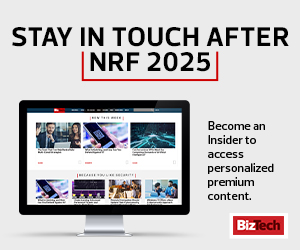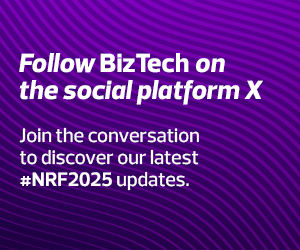1. Use SEO Meta Tagging to Compete for the Consumer’s Attention
One non-invasive way retailers can meet their consumer faster is by adding keyword meta tagging to their product pages and videos on their websites and social platforms.
“Say someone is looking for a Kate Spade handbag, which is sold by many retailers. The user does a Google search. If your site is selling a Kate Spade handbag and you have videos there, you get more points, so you come up higher in the SEO ranking list,” said Gina Cox, senior retail advisor at CDW.
“People love videos, so they stay a little longer interacting with that product,” said Cox.
It’s also a strategic way for retailers to compete for the consumer’s interest. “No customer shops at a single retailer. They all have the advantage of shopping at many different retailers, and we, of course, all vigorously compete for those customers,” said Doug Herrington, CEO of Worldwide Amazon Stores.
DIG DEEPER: These retail solutions and services from CDW can help your organization.
2. Pair AI-Driven Meta Tagging with Visual Search Capabilities
Retailers are pairing AI-driven meta tagging with visual search capabilities, allowing customers to upload images and find similar products. Meta tagging algorithms analyze visual elements such as color, texture and style, linking these features to product attributes.
For instance, a shopper can upload a picture of headphones into a search bar, and algorithms can identify and recommend similar items across a retailer’s inventory. Shoppers can also get creative by uploading, for example, a Polaroid camera from an antique store. The visual search can share the history of that product and where to buy a modern counterpart.
READ: Get a full rundown of what to expect from this year’s NRF 2025 expo.
3. Autodetect and Optimize Inventory Management
Retailers can also deploy AI-driven meta tagging to update product attributes based on inventory changes. For example, if a product runs out of stock in one size or color, metadata adjusts to reflect availability, ensuring customers only see options they can purchase. This improves the shopping experience by keeping search results accurate and up to date.
This collection of online information can also be accessed in-store. Vlad Rack, executive vice president and CTO at DICK'S Sporting Goods, explained how his store associates now use Samsung Android handheld devices to access real-time customer data and quickly assess inventory levels.
“This handheld device is bringing store managers out on the floor, when they used to be in the back office. They are integrating with employees and building more customer relationships,” said Brad Haczynski, senior vice president and general manager of mobile experience at Samsung.
EXPLORE: Make your retail environment smarter with these analytics tools.
4. Leverage AI-Driven Behavioral Analysis and Delayed Ad Targeting
A great deal of AI meta tagging and product information is tied to marketing. But retailers need to be careful about how they leverage consumer insights. Even consumers that agree to “opt in” to website cookies may feel their privacy is breached if a retailer is listening too closely.
Experts at NRF 2025 recommended a few alternative tactics. The first is behavioral context analysis. Rather than instantly triggering an ad based on a real-time signal (say a shopper mentions she is looking to buy a new laptop), the system could wait for additional supporting behaviors, such as browsing laptop-related content or visiting a tech retailer's website.
Time-delayed targeting is a tactic in which retailers set a rule to delay ad delivery by a few days or a week. For instance, after detecting the consumer’s potential interest, the system waits for a set period before showing a laptop ad. This makes the interaction feel less intrusive.
And finally, there’s progressive engagement. In this tactic, a retailer tempts the consumer’s appetite over time. Instead of showing a direct laptop ad immediately, the system can first display general tech-related content or educational resources about laptops, gradually leading to a specific product recommendation over time.
It’s as much a game of algorithms as it is human psychology. “It’s about us cultivating their relationship with the retailer,” Bron said. “And we have to be where the customer is at the moment they need us, with the right product and the right service.”
To learn more about NRF 2025, visit our conference page. You can also follow us on the social platform X at @BizTechMagazine to see behind-the-scenes moments.















